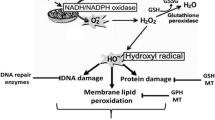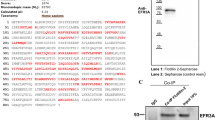Abstract.
Reggie/flotillin proteins are considered to be components of lipid rafts and are commonly used as marker proteins for lipid microdomains. Yet almost a decade after their discovery, the function of reggies/ flotillins is still enigmatic. In this review we summarize the present state of knowledge on reggie/flotillin structure, localization and function, and discuss the role of the proteins in development and disease. Based on insights into reggie/flotillin function and by comparison with related proteins of the so-called SPFH (Stomatin/Prohibitin/Flotillin/HflK/C) protein family, including stomatin, podocin and prohibitin, we propose the existence of specific types of protein-defined microdomains which are sculpt by the clustering of individual SPFH proteins. As ‘specialized rafts’ similar to caveolae, these membrane domains provide platforms for the recruitment of multiprotein complexes. Since, under certain circumstances, reggie-2/flotillin-1 translocates to the nucleus, reggie/ flotillin microdomains are not only stable scaffolds but also dynamic units with their own regulatory functions.
Similar content being viewed by others
Author information
Authors and Affiliations
Corresponding author
Additional information
Received 22 April 2005; received after revision 20 May 2005; accepted 22 June 2005
Rights and permissions
About this article
Cite this article
Langhorst, M.F., Reuter, A. & Stuermer, C.A.O. Scaffolding microdomains and beyond: the function of reggie/flotillin proteins. Cell. Mol. Life Sci. 62, 2228–2240 (2005). https://doi.org/10.1007/s00018-005-5166-4
Published:
Issue Date:
DOI: https://doi.org/10.1007/s00018-005-5166-4




